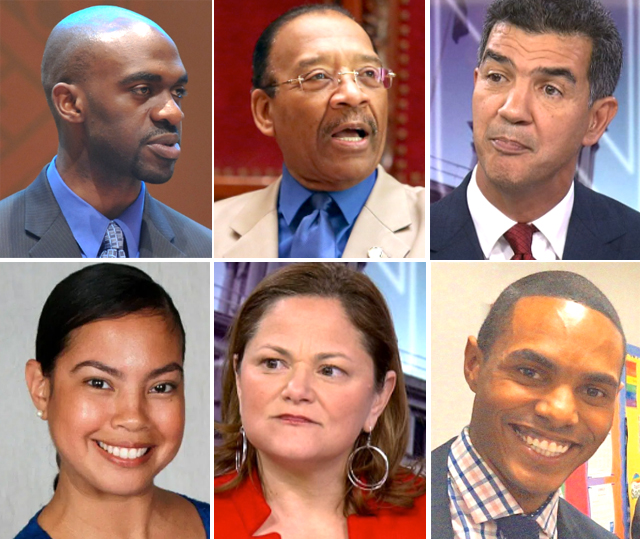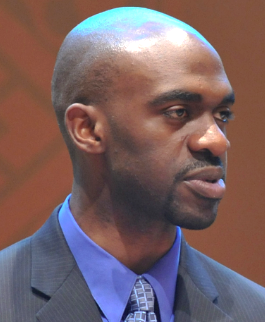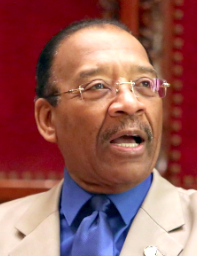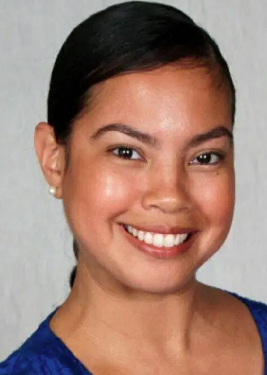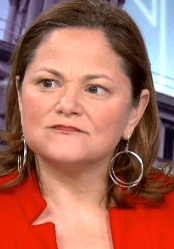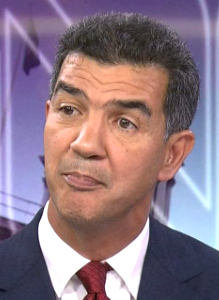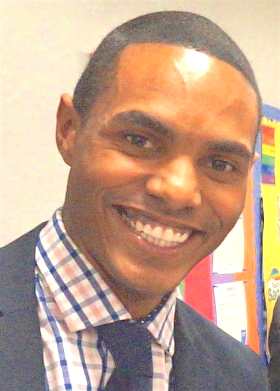The June 23 primary election to succeed retiring Rep. Jose Serrano in New York’s heavily Democratic 15th Congressional District in the South Bronx — one of the poorest, most environmentally disadvantaged districts in the nation — has attracted a very full slate of 10 candidates. Streetsblog asked the top seven of the field (based on contributions) to answer seven transportation-related questions. Six got back to us. (Twitter-based candidate Tomas Ramos, founder of Bronx Rising, did not.) The answers are lightly edited.
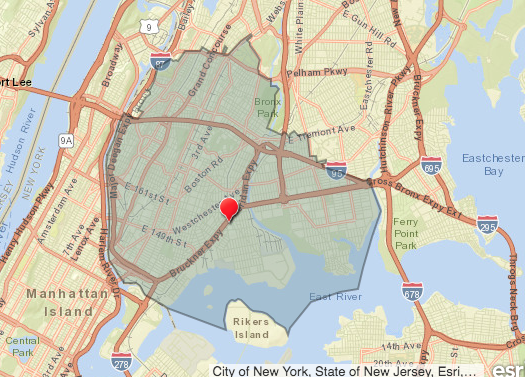
In alphabetical order, they are:
- Assembly Member Michael Blake, who represents the 79th District in the Bronx and ran for public advocate in 2019. Blake is running because, he says, “I believe in the Bronx,” and has garnered notable endorsements by municipal workers’ unions.
- Council Member Ruben Diaz Sr., an ordained minister, is an avowed social conservative and unrepentant homophobe who opposes marriage equality and has said that the “homosexual community” controls the council. He was endorsed last month by the city’s main police union.
- Bronx-raised cycling activist Samelys Lopez, founder of Velo City (a youth biking initiative) and a former Serrano staffer. Lopez has earned endorsements from Rep Alexandria Ocasio-Cortez, the Working Families Party, and New York City Democratic Socialist or America.
- Melissa Mark-Viverito, a former speaker of the City Council who represented East Harlem and Bronx neighborhoods including Concourse Village and Mott Haven. The first Latino speaker, Mark-Viverito is running on her progressive record and has endorsements from New York Communities for Change and the Latino Vitcory Fund.
- Council Member Ydanis Rodriguez, the chairman of the Transportation Committee, who represents the northern Manhattan neighborhood of Washington Heights, Inwood and Marble Hill. A staunch supporter of Vision Zero, Rodriguez also ran for public advocate in 2019.
- Council Member Ritchie Torres, who represents District 15 in the central Bronx. The biggest fundraiser of the field, Torres, who dubs himself “your fighter for the Bronx,” has endorsements from the Congressional LGBTQ Equality Caucus’s PAC and a number of trade unions as well as fellow Council members.
Here are their answers to our questionnaire (spacing is a little messed up because some people did not provide full answers):
What would be your top transportation policy agenda item as a Congress member?
MICHAEL BLAKE: As a member of Congress, my top transportation policy agenda would be retrofitting our public transportation system to ensure that both operators and riders are safe. During and in the aftermath of the COVID-19 crisis, we want people to feel protected when they ride on public transportation and not feel compelled to drive their personal cars instead, which has negative consequences for the environment and will clog city streets. This also involves altering our current infrastructure to include more bike lanes and walking lanes for pedestrians in New York City, investing in buses powered by renewable energy, and increasing the speed and reliability of rail systems.
In addition, part of ensuring the safety of transit riders is building more ADA-accessible stations. In New York City, for example, there are far too many subway stations that are accessible to people with disabilities, and elevators are often unsafe or broken, and this needs to change.
RUBEN DIAZ: My top priority would be to transform the infrastructure of the rail lines in New York City, from its bare bones currently to becoming a model of 21st century ingenuity. For example, the Bay Ridge Lines in Brooklyn and Queens is massively underutilized when its capable of carrying thousands of rail cars daily.
The Staten Island railroad is closed when it should be fully operational. NYC gets virtually all of its goods from trucks which destroy roads and poison our air. No other U.S. city receives its goods entirely from trucks.
Let’s recalibrate what’s here now then create an ambitious plan to expand it.
SAMELYS LOPEZ: The top transportation policy is to innovate and modify our transportation system. According to the U.S. Energy Information Administration, the Transportation Sector consumes 37 percent of the energy sources. About 80 percent of the sources are fossil fuel base (coal, natural gas, and petroleum).
The national infrastructure system is falling apart so there is a need to first implement a Green New Deal to move us to a new green age of innovations. Over 70 percent of people around the world will live in cities in the next 30 years. This will require the diminishing use of gas guzzling transportation like cars and diesel trucks. Advocating for a free public transportation system and light rail for mass population transportation.
Advocating for pedestrian friendly street and walkable street, like woonerfs that are constructed in European countries.
MELISSA MARK-VIVERITO: Our lack of funding and attention to transportation matters has endangered the lives of our essential workers during this pandemic. We had no plan on how to deal with essential workers still going to work during a crisis.
As a long time resident of New York City, I understand the need for a reliable and affordable public transit system and rail. Specifically, I would push for more studies that study traffic congestion, reduce and/or eliminate transit fares, and for policies that push for environmentally-friendly vehicles. In Congress, I will fight for a world-class transit system that is reliable, affordable, and accessible by advocating for the Green New Deal. The GND will not only provide a better transportation system but will do so in a way that will also take into account our climate crisis and the disproportionate
I would expand other avenues of transportation that are currently not only being used but are demanding protection and inclusion in the city and state-level infrastructure. For instance, dedicated bus lanes, more bike lanes, and more protected bike lanes in the Bronx.
Select Bus Service using dedicated bus lanes has reduced travel times by 20 percent while increasing ridership on those routes. An expanded bike lane network, along with the presence of North America's largest bike-sharing system, have made cycling for everyday transportation a viable option for many New Yorkers. Protected bike lanes have been proven to reduce crash injuries among bicyclists, walkers and drivers by approximately 40 percent . Countdown clocks, sidewalk extensions and landscaped pedestrian-refuge islands make walking safer, more pleasant and more efficient
YDANIS RODRIGUEZ: Being the chair of the Transportation Committee in the city Council allowed me to acquire knowledge and experience to understand the salience of transportation issues and needs in the Bronx neighborhood.
If I’m elected as the next congressman, I will make sure adequate funding is available to be allocated in improving buses and trains services.
I am fervent and committed to better protect livery taxi and promote a healthier industry from other companies that want to take over New York.
RITCHIE TORRES: My highest transportation priority is federal reinvestment in public transit, particularly in the context of greening American infrastructure.
What should the federal government do to stop the massive increase in pedestrian deaths nationwide, which are rising due to the size of SUVs and increasingly distracted driving?
BLAKE: The federal government should mandate that automakers include the latest and most advanced safety devices to minimize injuries to pedestrians. This has already happened in Europe and Japan and has proven to be effective.
DIAZ: Statistics conclusively show that driver distraction more than any cause, is increasing pedestrian deaths. This plus speeding and huge cars.
Why can’t the manufacturers of automobiles provide a device which blocks cell-phone signals, except for 911? It’s possible to install regulators on cars which prevents excessive speeding.
And all levels of government need to remind the public in every possible way that pedestrians always have the right of way. This simple fact is too subtle.
LOPEZ: Transportation design is the most important method to reduce massive increase in pedestrian deaths. Most towns and cities are designed for the car and trucks, with hardly any emphasis on pedestrians.
Compact towns with woonerfs can reduce the use of SUVs and move toward less cars or if needed smaller cars.
MARK-VIVERITO: To foster safe streets, federal transport agencies should support changes in roadway design and policy.
Complete streets encourage mobility and health by allocating space for walking, public transportation, bicycling, and wheelchair access, and by prioritizing curbside access for taxis, delivery vehicles, and passenger loading over the free or underpriced curbside parking.
RODRIGUEZ: The rise of SUV-related accidents across the nation is definitely striking and worrisome.
The federal government should pass legislation that will amend the existing transportation laws and regulations to ensure the safety of pedestrians.
TORRES: Just like fewer guns would mean less gun violence, fewer vehicles would mean less vehicular violence. There needs to be a federal redistribution of resources from the automobile to sustainable alternatives.
We can no longer afford to remain captive to car culture.
How do you feel about current federal allocation formulas for highway spending versus transit? If not, what is the correct formula? What would you change about federal transportation funding generally, and what would you like to see in terms of funds for your district?
BLAKE: Congress should encourage greater use of public transportation over individual automobile use, and the federal allocation formula should reflect that priority.
It is critical that the federal government take the lead on prioritizing the reduction of carbon emissions in the transportation sector, and that begins by encouraging the use of public transportation over automobile and highway use.
DIAZ: The current formula (PL 141-94) according to Congressional Research Service 2019, was enacted into law in 2015, and basically states that each and every state shall receive 95 percent of the money they contributed into the Highway Trust Fund. This is illogical and not policy driven. The relevant factors should be population, growth trends and highway use, basically usage and need as opposed to 95 percent of what was contributed. The Highway Trust is funded by a federal gasoline tax. This too is limiting the needs of a 21st century country.
There must be an independent source of funds and the allocation should be policy based, that is what areas of the country are best being served and do they further other goals, including air quality and safety? As far as my district, it is the poorest congressional district in the state per capita. Goods transported by rail cost less and are fresher than those transported by trucks. By focusing on overall policy, it directly helps my district and every other one.
LOPEZ: Because of how much energy the transportation sector consumes there is a need to rethink highway design and transportation as a whole. The highway system is in disrepair or the infrastructure is falling apart. This is an opportunity to fund major light rail and other mass transit options to connect towns and cities. Highways were designed for cars and trucks, with the cheap fossil fuels that were available at the start of the Industrial Revolution.
We don’t have the same resource and energy we had when the highway system was being constructed. There is a need to fund federal initiatives that use green design and less fossil fuels to construct these systems. For my district, funding for more mass transit, light rail, and bicycling will improve the neighborhood.
MARK-VIVERITO: The economic benefits of highway spending may be greater in areas with more congestion or in areas of greater anticipated population growth and economic activity, but the current approach may direct federal resources to areas where the benefits of additional spending for highways are less. Similarly, costs to construct and improve highways may depend more on population density and geographic features than on other factors that are more important in the formulas, such as the size of a state’s highway system and its recent level of use.
As well as developing a transportation strategy that not only engages alternative methods of transportation and is compliant with a green design to reduce/eliminate our carbon footprint, but that is inclusive of our marginalized communities. Many of the residents in Congressional District 15 are essential workers and they need not only an efficient public transportation system in the form of trains or select and dedicated lane buses but alternative methods that are on par with their earnings. Therefore, the streets should reflect such inclusiveness to allow for the city’s residents to move safely and efficiently.
RODRIGUEZ: Transportation is a big issue for the people of the Bronx, I don’t think enough funding was given to help the development of transportation infrastructure in the Bronx, which dissatisfy members of our community.
If I’m elected, I will fight to ensure adequate resources will be allocated to support the development and the improvement of the transportation system in my district.
TORRES: In the 20th century, one of the original sins of America has been the decision to prioritize highway construction for federal funding.
Not only did that fateful decision lead to an American addiction to the automobile, with consequences for climate change and housing, it handed Robert Moses a blank check to radically reshape NYC in his image.
In order to reverse the destructive legacy of Robert Moses, we must direct federal dollars toward transportation alternatives.
What could the federal government do to promote transit better?
BLAKE: The U.S. Department of Transportation must provide substantial funding to encourage the benefits of transit usage as well as social distancing and quality-of-life guidelines.
There must also be a connected public-health-awareness campaign to explain the lifestyle benefits for people taking public transit.
DIAZ: Allow use of Federal Highway Trust Funds for mass transit, subways and busses.
LOPEZ: To learn from the scientific community and think of new ways of what transit can be. The current transit system was set up with cheap fossil energy and that age is almost done. Many energy scientists have shown that we have extracted the easily available fossil fuel and within the next 30-years we will expend more to extract.
The Green New Deal will be required legislation to plan for a new future. The industrial, transportation, and electricity-generation sectors have to be modified to adapt to a new age of no cheap oil. There will be a need to pass transportation legislation to improve on mass transit and advocate for light rail to move more people and use less cars. There will be a need to pass legislation that promotes more walking and bicycling. Moving away from old methods whose looks are changed, but they cause the same problem. For example, electric vehicles consume a lot of energy and extract minerals that come from around the world. Sustainable transportation infrastructure can help cities and towns rely more on local available energy and networks that rely on energy and network systems that rely less on fossil fuels.
MARK-VIVERITO: Our transit system is the bloodline of our city, yet our MTA bus lines and trains are in a deep crisis. Before the COVID-19 pandemic hit, I used to ride the subway everywhere I would go and would notice that there were constant delays, overcrowding, and trash in our trains.
In Congress, I plan to do everything in my power to change this.
The federal government could promote better transit by fully adopting policies that align with the Green New Deal for green, sustainable jobs that reproduce healthier transportation standards, commutes as well as more ways of travel.
RODRIGUEZ: The federal government should seek innovative ways to bring vitality to places where the economy has been hampered by its poorly designed transportation infrastructures.
In addition, there should be legislation passed by the federal government to amend the existing laws and regulations to improve and develop infrastructure.
TORRES: Properly fund it. Without federal funding, local and state governments have a negligible ability to maintain and expand public transit.
What have you done in your career to get reckless drivers off our streets. Please be very specific.
BLAKE: In the New York State Assembly, I have championed both safe driving and safe streets. Specifically, I’ve co-sponsored the following bills, among others:
a) a bill to establish a demonstration program that would implement speed violation monitoring systems in work zones.
b) a bill to direct New York State’s transportation commissioner to conduct a study on the implementation of traffic control devices at intersections that are heavily used by visually impaired and hearing-impaired pedestrians.
c) a bill to suspend a person’s vehicle registration if they have been documented five times within a year by a photo violation monitoring device for traffic violations.
d) and a bill that mandates pre-employment and random drug and alcohol testing for for-hire drivers in order to protect their passengers as well as pedestrians.
DIAZ: I was in Albany for 16 years and voted in favor of greater penalties for speeding, drunk driving and the law which defined reckless driving as driving at 20 miles per hour over the speed limit.
LOPEZ: I co-founded Velo City, a multimodal advocacy initiative, mainly focusing on bicycling and teaching youth about the importance of urban planning.
Even today I ride my bicycle to get around in the district.
MARK-VIVERITO: As City Council speaker, I passed the Vision Zero plan, a sweeping legislative package aimed at improving traffic safety and the safety of our streets. The package of bills included mandating more slow zones and increasing penalties on reckless drivers.
Safety is the most important priority, and I have over a decade of experience balancing the needs of different constituencies.
As a member of Congress, I will continue fighting for safer streets and access to public transportation and bike lanes. Millions of New Yorkers rely on our public transit and bike lanes to get to work every day, and they deserve to be brought to the decision-making table.
RODRIGUEZ: We should administer the written test to acquire a learner’s permit in a fashion that can truly reflect the responsibility of driving a car on the road.
Especially in a city like ours with hundreds of thousands of tourists coming in every year, we need to ensure we have a city of not only beautiful views to offer but also a reliable transportation system that ensures the safety of people on the street.
There should be bills introduced to regulate reckless drivers on the streets, we need to take this very seriously before it costs us more lives.
TORRES: I have a perfect legislative record of voting for bills that hold reckless drivers accountable. I have voted for bills that allow for stronger speed limits, more speed cameras, and the seizure of vehicles from reckless drivers.
How can Congress support active transportation such as biking, walking and micromobility?
BLAKE: Congress needs to work with the Department of Housing and Urban Development and the Department of Education to ensure that newly created residences and school buildings are “bicycle friendly” and that bike storage is available and accessible. Promoting cycling among our youth is critical so that, by the time they are adults, cycling will be a habit. Employers should also be encouraged to provide bicycle commuting reimbursements.
Currently, some employers provide reimbursements for the gym memberships of their employees. We should encourage an expansion of that model and add a modest reimbursement for employees who cycle to work. Every little bit counts. I’m confident that pedestrians, bicyclists, and public transit riders will not only coexist but thrive in a post-COVID era, and I look forward to working to make that a reality.
DIAZ: In 1996 President Clinton allocated block grants to communities known as CMAQ funds. These congestion mitigation funds were used in NYC to constrict bicycle lanes, thought out the five boroughs.
Congress should allocate block grants for these projects.
LOPEZ: Congress can support bicycling by passing the Green New Deal. Working with innovative sustainability people with knowledge of biophysical systems and energetics in the context of ecosystem functions. Changing how federal agencies work.
For example, having the Federal DOT work together with the EPA to work on light rail, mass transit, and pushing for design that is compact and walkable.
Providing more Federal Funds for free public transportation in major cities.
Also, working alongside agencies to promote woonerfs or pedestrian oriented streets.
MARK-VIVERITO: Congress can support active transportation by investing in walkable neighborhoods, safe and complete streets, and by advocating for easy access to transit. Congress, as well as state and local governments, now must put forth a vision of a balanced transportation system that meets the rapidly changing needs of today and tomorrow. That vision must include a robust investment to connect active transportation networks and longer trails that act as spines connecting communities and states.
The transportation landscape in American cities is changing with the arrival of e-bikes, scooters, hoverboards, and more. Devices that are attracting a wide range of users and expanding travel options. More studies and clarity are needed about how and where to create a safe environment for the deployment of these devices. More dedicated active-transportation infrastructure is needed to ensure connected, low-stress routes that are inclusive, safe, and inviting to all those seeking active and low-impact ways to get around.
RODRIGUEZ: While promoting low-carbon and active transportation such as biking, walking and micromobility, the infrastructure should be adjusted to meet the needs of these transportations.
There should be designated lines for people on bikes, we need to make sure that biking and walking are plausible solutions for getting around in their city and neighborhoods before we encourage people to adapt to these transportation methods.
TORRES: Congress could provide financial incentives for states and localities to create more walkable and bikeable spaces.
Is there a safety, design or enforcement strategy that is not being deployed that you think is vital to making our roadways, sidewalks and public spaces work better for everyone? How would you promote it in office? (Hint: This is a “visionary” question, so don’t think small.)
BLAKE: Congress needs to invest in bold infrastructure plans and expand London’s model of open streets. An open-street model is imperative for improving the health and safety of my neighbors in the Bronx. This borough has one of the highest rates of asthma per capita due to pollution, in addition to other health-related concerns such as obesity. Having open streets will assist in promoting cycling and walking and help Bronxites lead a healthier, more active lifestyle.
In addition, Congress should consider revisiting the tax code to provide tax credits for bicycle purchases, just as is the case with “green” automobiles. Congress should also work with the Department of Education to promote a cycling-credit initiative in which students are given some kind of physical education credit for biking. Schools should also have access to government grants to create bike-sharing programs for their students. These innovative, locally focused ideas are what we need to bring our transportation infrastructure into the 21st century, promote healthy living, and improve the environment.
DIAZ: Yes. In 2006 the Regional Plan Association presented a 25-year plan to then Gov. Pataki. It included 10 chapters, which focused upon the evolving future needs for transportation in New York State.
This plan has not been implemented or updated. It was presented in 2006 as the state’s official transportation plan.
Let’s not talk; let’s implement. Let's not reinvent the wheel.
LOPEZ: I have heard how transportation design and methods have created many problems for people with disabilities. In NYC elevators are broken in the subway system and there are not enough subway stations with wheelchair accessibility. A resident on a wheelchair said that it takes them 1 hour and half to get to a place when it takes about a half hour for someone not on a wheelchair. A resident in Public Housing stated that many businesses don’t have ramps and don’t have enough transportation options for people with disabilities.
One major problem in NYC design and enforcement is the push to accommodate bicycles, cars, trucks, buses, motorcyclists, and elevated trains on city roads. Many bicyclists feared being hit by a car or truck. Car riders, truck riders, and bus drivers fear bicyclists. Even pedestrians feared bicyclists and motorists. There is a need to identify roads that are mainly for pedestrians or walkers, for example woonerfs. Identifying roads and networks for light rail, buses, and smaller cars. Also, to use green infrastructure, have more trees to reduce air pollution and design neighborhoods that promote walkability.
MARK-VIVERITO: I believe there are existing models that can be used as examples to make our city more livable, and safer for all. For instance, the urban project in Medellin, Colombia. Years ago this Colombian city was similar to many contemporary cities. But after a population boom, as people moved in from rural areas in search of opportunity, and after rough years during the 1980s, the city’s infrastructure was no longer viable. Urban areas characterised by substandard housing and/or poverty began forming in the outskirts. People were disconnected from transportation and other services thus further marginalizing communities and aggravating inequalities. Through social urbanism the government was able to create social-impact programs, as well as new infrastructure and urban projects that connected the neighborhoods with the city’s urban life.
Medellín is vanguard on new social, educational, and cultural programs, as well as being home to many urban transformations designed to connect and improve inequity. Public transport redesign has been particularly effective. They have a Metrocable gondola lift-system that began operations in 2004. In 2011, roofed escalators connected previously in conflict neighborhoods separated by the sides of the valley where Medellin sits.
In New York City, we must embrace a vision that diversifies options available for people to get around the city, and that makes traveling, whether for recreation or work, safe for all. As a public transportation user, I have seen improvements in bus rapid transit, ferry service and bike share programs over the years. Although it seems that these efforts are inconsistent and not fully embraced by the multiple administrations over my years in elected office.
As I have done historically, I will work side by side with advocates who have extensively studied these issues to arrive at a platform that lays out a more robust vision that I can champion.
RODRIGUEZ: A clear division on the lanes for vehicles, pedestrians, and bikers should be promoted as we encourage people to take low carbon transportation methods, we need to provide members of our community with infrastructure that they need.
Public transportation should be allowed with designated lanes as well to improve the efficiency of the long-criticized public transportation system in New York City.
Not only do we need bills to regulate the existing problems on the roads, we also need to promote the design of the road in order to have a safer transportation system.
TORRES: Nothing would symbolize a new direction for the Bronx like the decommissioning of the Cross Bronx Expressway, which has been an environmental scourge of the Bronx for far too long.
